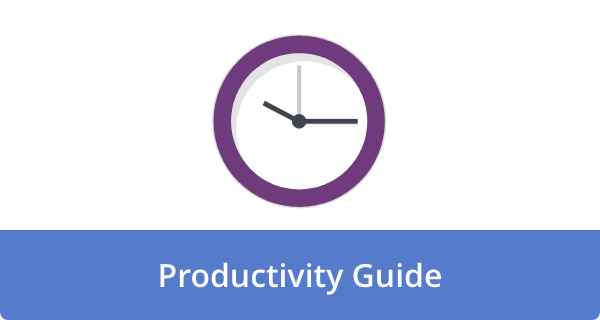

Your pipeline is not a mystery. It is a calendar problem hiding in plain sight. If your week dissolves into reactive emailing and “got a sec?” pings, time-blocking can turn chaos into clean momentum. In sales, time-blocking means pre-allocating focused, repeatable blocks on your calendar for the specific behaviors that accelerate deals. Done well, it protects your best hours for high-leverage work, compresses cycle time, and gives prospects a faster path to yes.
Below are seven field-tested plays I’ve seen busy teams adopt without drama and keep long after the kickoff meeting glow fades.
1) Defend golden hours for live contact
Block your highest-energy two hours for calls and same-thread replies when your buyers are most reachable by time zone. Put it on repeat, name it “Revenue Hours,” and route every net-new convo and late-stage follow-up there. You front-load momentum, then let asynchronous work ride the wake. When one team moved its East Coast outreach to 8:30–10:30 a.m. local time, the connect rate rose 14% over two weeks, and stage-progress speed followed. The logic is straight math: more real-time contact in fewer windows reduces context switching and drags.
2) Run a 15-minute daily deal triage
Open the day with a short, quiet block to rank every open opp by speed risk. Use a simple red-yellow-green lens and pick the one action that advances each deal today. No decks. No rabbit holes. If you cannot name a next step in one sentence, the agreement is yellow, not green. This play prevents “invisible” slippage that accrues when you only touch loud deals. It also sets a small cognitive goalpost that protects your later deep-work blocks. Momentum compounds when the first 15 minutes clarify the next 5 hours.
3) Batch proposal work into two deep-work sprints
Proposals drift when they compete with Slack. Give them two 45- to 60-minute sprints daily with notifications off and a visible status in your calendar. Treat each sprint as a single-thread task: scope, price, or language, not all three. One AE I shadowed finished a complex renewal two days earlier than usual by drafting pricing in sprint one, then only redlining terms in sprint two. The cause-and-effect is simple. Switching costs kill precision work. Batching creates flow, and flow creates quality that speeds approvals.
4) Book post-call micro blocks for recap and CRM
Every discovery, demo, or procurement call gets a 10-minute buffer block. In that block, you log notes, update the next step, and send a three-bullet recap. Do not book over it. If the call ends early, keep the buffer. Reps often think they will “catch up later” and pay a cycle-time tax when details fade. A 10-minute habit multiplied by five calls prevents a 60-minute Friday scramble that still misses nuance. Fast, accurate recaps also train prospects to respond inside your rhythm, not theirs.
5) Pre-wire blockers with a daily “deal desk” slot
Hold a recurring 20-minute slot with legal, security, or finance to pre-clear issues on active deals. Come with a one-pager and a direct question like “Is clause X acceptable if we cap liability at 1x?” You trade scattered back-and-forth for tight decisions inside a protected window. Luis’s team cut the average legal review time from 11 business days to 6 by treating it like a standing meeting, with progress tracked in a shared doc. The critical reasoning is obvious. Centralized answers shorten loops. Shorter loops close faster.
6) Offer “same-day next step” micro appointments
Reserve two 15-minute micro slots late afternoon, labeled “Hold for buyer next step.” When a prospect says “We’re aligned,” you grab one of those slots to schedule a same-day pricing review, security Q&A, or executive intro. This reduces no-show risk and keeps emotion hot while consensus is forming. In one quarter, an SMB pod logged 38 micro-meetings, resulting in 12 pulled-in closes. The mechanism is urgency without pressure. You make progress by eliminating scheduling friction.
7) Friday slippage audit to refactor next week
Protect 30 minutes every Friday to scan your calendar and your pipeline for slippage patterns. Ask three questions: Which blocks were honored, which were hijacked, and which deals stalled because of it? Then refactor next week’s template. Maybe your golden hours should slide, or your proposal sprints need a third slot in quarter-close weeks. Honesty is the point. Time-blocking is not dogma. It is a living operating system that should adapt to your buyers, seasons, and team capacity.
Quick starter template you can copy
8:30–10:30 a.m. Revenue Hours
10:30–10:45 a.m. Deal triage
1:00–1:45 p.m. Proposal sprint
3:40–4:00 p.m. Deal desk
4:40–5:00 p.m. Same-day next step slots
Expect to iterate. Teams with the best discipline still flex during launches, quarter close, or procurement delays. The winning behavior is not perfect adherence. It is the weekly review and reset that protects a few critical blocks through the noise.
Why this works: you compress the path between intent and action. Time-boxed focus eliminates the micro-stall points that make deals feel slow. You also create a common language for managers and reps to coach against. Instead of “work harder,” you can say “let’s defend your Revenue Hours and add one more proposal sprint on Tuesdays.” That precision builds trust, and trust shows up in the forecast.
Closing thoughts
If your deals routinely stretch one more week than they should, do not add hours. Add fences. Start with two Revenue Hours, a daily triage, and post-call buffers. Measure one thing for two weeks: time from meeting to next step. If it drops by even 10%, keep going. You will feel the difference by Wednesday. Speed is rarely about heroics. It is about a calendar that tells your pipeline exactly where to go next.
Image Credit: Photo by Pavel Danilyuk; Pexels











Aaron Heienickle